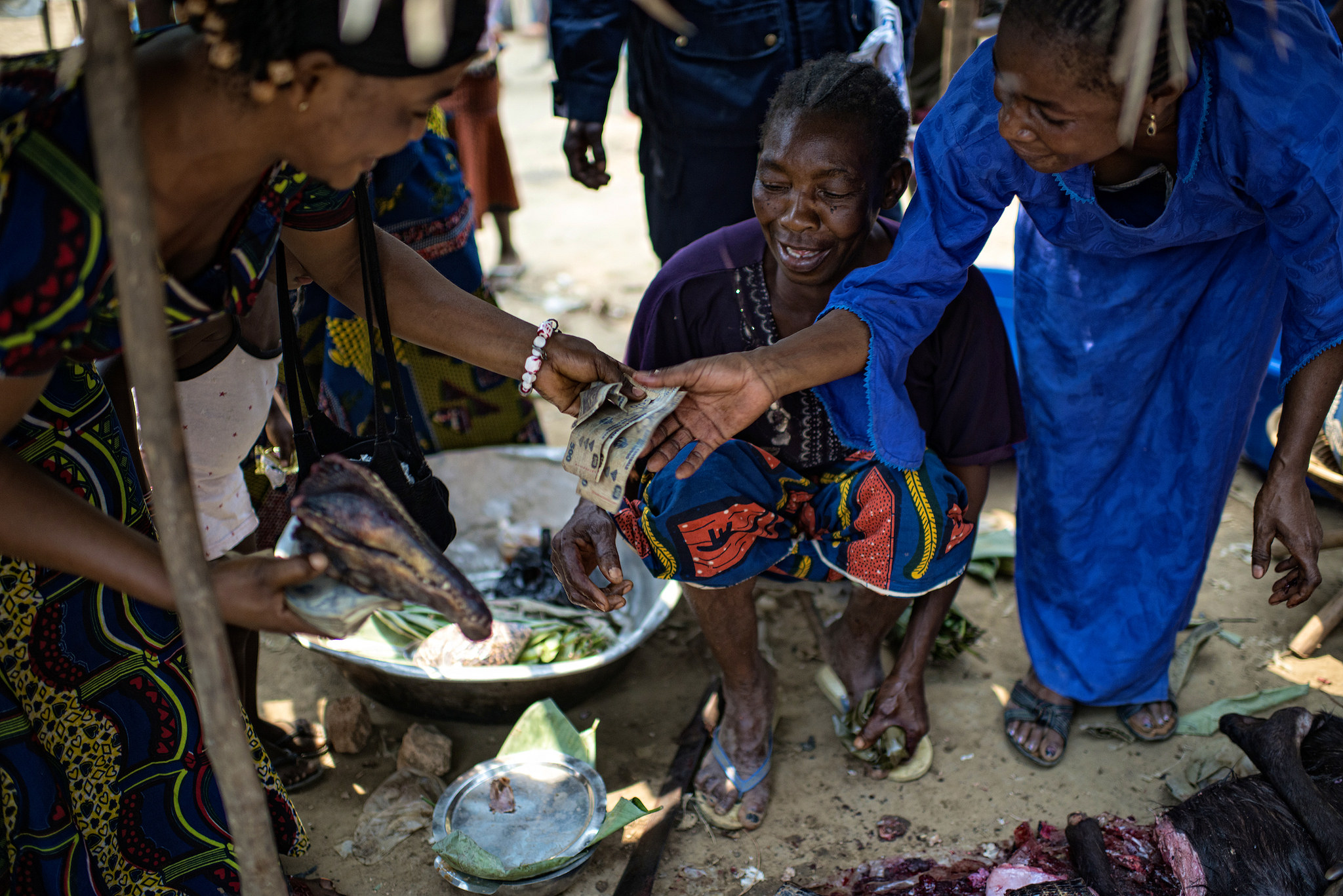
Evidence of Pygmy culture in sub-Saharan Africa dates back more than 20,000 years. With forests playing an integral role in Pygmy lives, a traditional diet staple and source of protein is wild meat – also known as bushmeat.
But little is known about the impact the use of wildlife as food by Pygmies has on Congo Basin forests, or, for that matter, the impact of non-Pygmy hunting in those same forests.
“Is sustainable hunting by indigenous people in tropical forests possible? And are these wild meat extraction levels compatible with conservation?” asked John E. Fa of Manchester Metropolitan University and the Center for International Forestry Research (CIFOR).
A new study he coauthored recently published in PLOSOne begins to answer those questions, building on CIFOR research that works to resolve questions related to empowering indigenous and rural people to use resources sustainably.
With information from 34 Pygmy settlements and 26 non-Pygmy sites, researchers found substantial differences in the type and amount of fauna collected by the two groups.
Presenting his findings at the Annual Meeting of the Association for Tropical Biology and Conservation (ATBC), Fa said, “We found that non-Pygmies may be responsible for 27 times more animals harvested than Pygmies. This is an important difference.”
Collating data from a range of research dating back to the 1980s that quantifies kills, Fa and his coauthors calculated the amount of meat extracted from Congo Basin forests and compared what was taken by both groups.
Fa said, “There have been studies that have described Pygmy practices in one area or another. But there haven’t been any studies that brought all this information together.”
Constructive comparisons
The researchers estimated the Pygmy population in the Congo Basin at 900,000 – something that has not been done before, as demographic data for the area is sparse.
They found that Pygmies are hunting 77 different species, and non-Pygmies 97.
In addition, Pygmies on average are taking bigger fauna while non-Pygmies are hunting smaller animals but in larger quantities.
“There is a difference because they are using different techniques. If left to their own devices, Pygmies will employ more traditional hunting techniques like bows and arrows, nets or crossbows. In the case of non-Pygmies, they are mostly trapping or using firearms,” Fa said.
Trapping is an indiscriminate practice that captures any animal that comes along, hence more animals are taken. This is in contrast to the use of bow and arrow or crossbow, in which an individual must watch, wait and work for a single animal.
“The general picture that emerges is that Pygmy hunters have less impact on game animals in the Congo Basin than the more numerous, more generalist, non-Pygmy hunters,” the study notes.
Another difference Fa and his coauthors highlight is the use of the meat itself, with Pygmies on average selling 30 percent of their hunting proceeds and non-Pygmies 70 percent.
“Sale to markets is a significant distinction,” Fa said, adding that commercial hunting has the potential for much greater impact on wildlife numbers.
Urban jungle
The urban taste for bushmeat is in part driving wildlife hunting in the area, and its commercialization is having an impact on animal numbers, which the study shows.
To offer a more complete picture of the situation, the study looks at both extraction rates, or the amount of meat taken from Congo Basin forests, and consumption.
Fa said, “People buy bushmeat in cities because it reminds them of home; there is a cultural attachment to bushmeat even if they don’t need it for food security.”
The scientists estimate that 11 million metric tons of meat is taken from the Congo Basin every year, and this is occurring as the population increases. Demographic and landscape changes are impacting both Pygmies and non-Pygmies, and their use of wildlife.
“In the case of Pygmies, often they don’t sell anything at all. Living in the forest generally they don’t have the incentive or opportunity to monetize the practice. But if they have relocated to areas near roads, then opportunities arise for them to sell the animals they catch,” Fa said.
Incorporation
Discussing the use of wildlife as food in an ATBC keynote speech, study coauthor and CIFOR Deputy Director General Robert Nasi said of its impact on people and animals, “We need to avoid a lose-lose situation.”
This study helps to illuminate the complexities along the bushmeat value chain, with traditional practices, commercialization and conservation coalescing and clashing. It also offers much-needed evidence to support moves to incorporate indigenous people in forest management.
“It is important that forest people have a say in how forest resources are used. They’ve got to be made participants as those resources are crucial to their livelihoods. The challenge is how to do so,” Fa said.
As to the policy implications of the study’s work to distinguish indigenous and other impacts on forests, Nasi said, “We should focus on ways to ensure Pygmies can continue their hunter-gatherer life – if they choose to – and to ensure sustainable management of wildlife for non-Pygmy populations.”
Distinguishing ways of living and outside pressures, this research provides a contribution to best practices in natural resource management.
“The study is the first that looks at this issue at this scale, and the results are staggering,” Nasi said.
We want you to share Forests News content, which is licensed under Creative Commons Attribution-NonCommercial-ShareAlike 4.0 International (CC BY-NC-SA 4.0). This means you are free to redistribute our material for non-commercial purposes. All we ask is that you give Forests News appropriate credit and link to the original Forests News content, indicate if changes were made, and distribute your contributions under the same Creative Commons license. You must notify Forests News if you repost, reprint or reuse our materials by contacting forestsnews@cifor-icraf.org.

